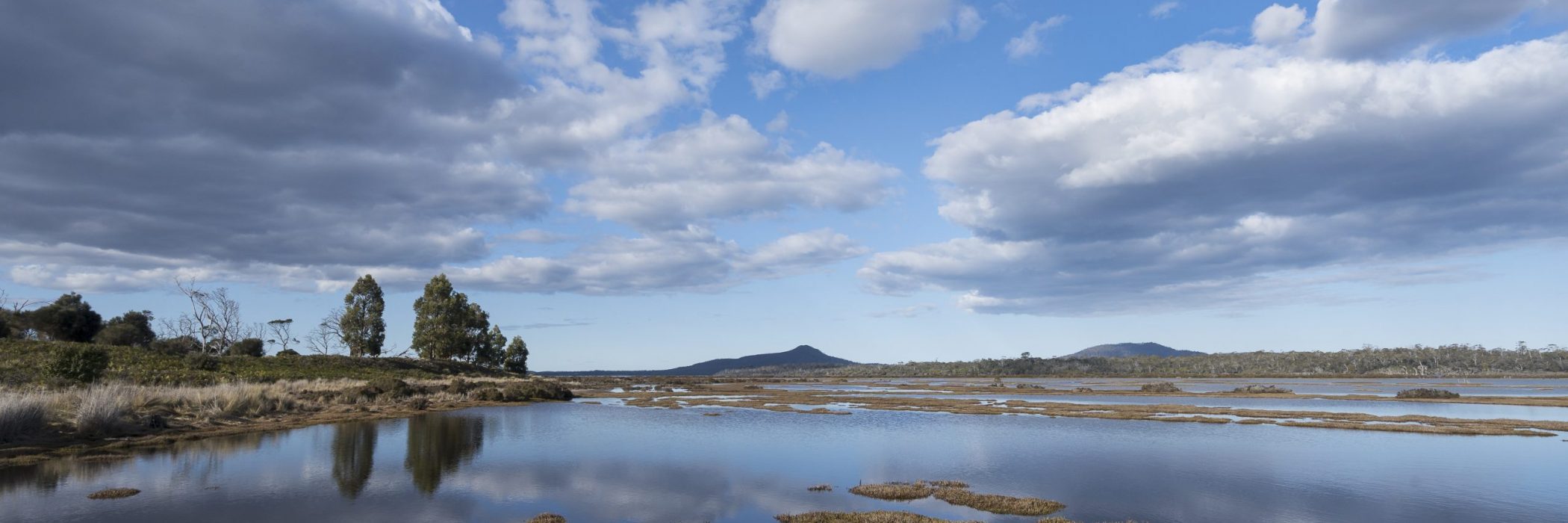Drains, ditches and dirt at Long Point Reserve
The last few months have seen exciting developments in our remediation and restoration project at the TLC’s Long Point Reserve, on Tasmania’s east coast.
Long Point Reserve is an intricate habitat of low-lying saltmarshes, coastal grasslands and sand dunes supporting coastal woodlands. The extensive temperate saltmarsh, listed as nationally vulnerable, is the largest in Tasmania. These ecosystems are an ideal breeding and feeding ground, and a critical summer habitat for migratory water birds from all over the world.
Long Point is the site of a number of restoration works, including one to remove drainage infrastructure that is impeding the natural flow of water. We’re collaborating on this project with Nature Glenelg Trust (NGT) as part of a project supported by NRM South through funding from the Australian Government’s National Landcare Program. This restoration will return the natural water flow across the property, allowing for seamless transitions and upslope migration of saltmarsh communities in readiness for increased storm surges and predicted sea-level rise.
Read an introduction to this project
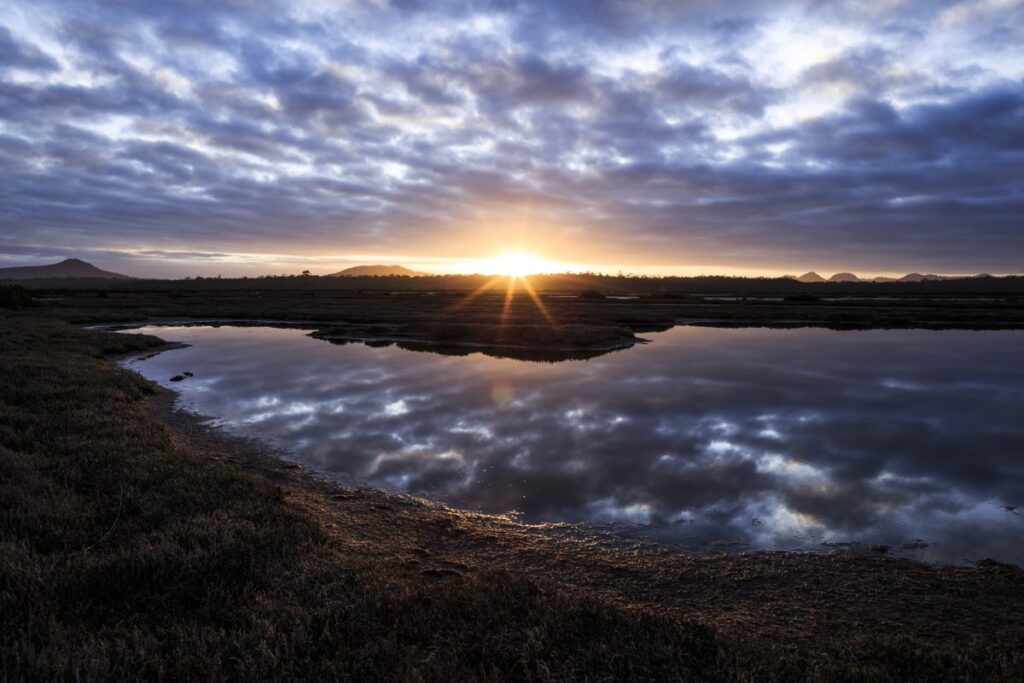
Flooding due to three La Niñas in a row has made it hard to progress the work at Long Point Reserve, but in autumn there were some significant advancements. The aerial photo below shows the sites where NGT is working – in the top left-hand corner you’ll see Barkstand Point. Major aquaculture works were constructed here in the early 1990s, both retaining and draining this part of the property. When the drains were dug, the spoil from the process was piled up beside them; remediation meant pushing that spoil back into the drain and, as NGT say, ‘carefully re-exposing the former natural surface level…this accumulated former surface layer of carbon-rich sediment was only 5-10 cm thick in most places, sitting over sand. Given the immense scale but precise nature of the task, the excavator operators did a tremendous job as we aimed to re-expose a target coverage of 80-90% of the original surface. Now we watch with interest as we await the regeneration of saltmarsh plants in this newly re-exposed former surface.’
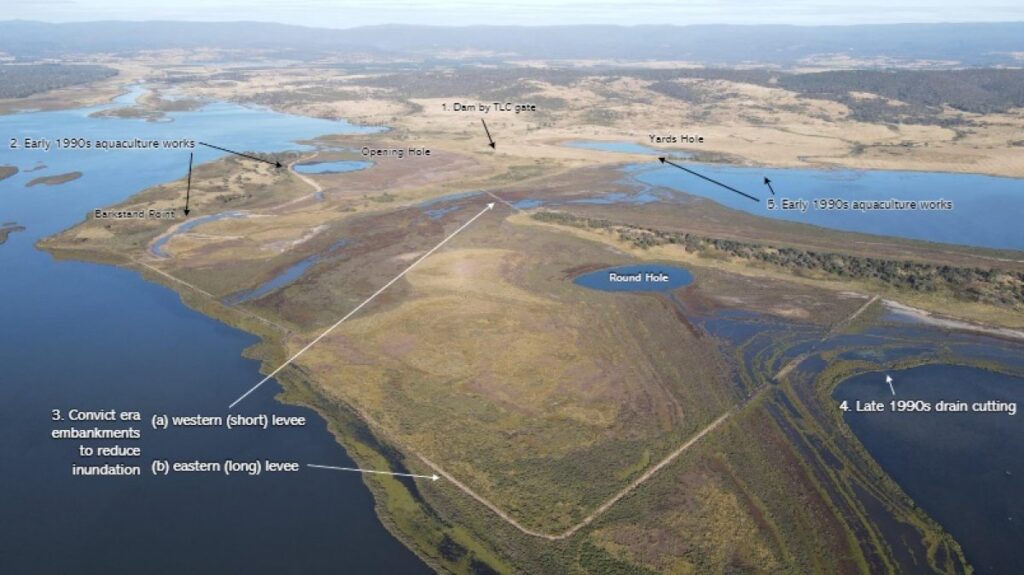
Don’t be fooled into thinking this was a simple job – the scale of the drainage in this part of the property is huge. Looking at the photos below you can see what it looked like both before and after the drain was filled in.
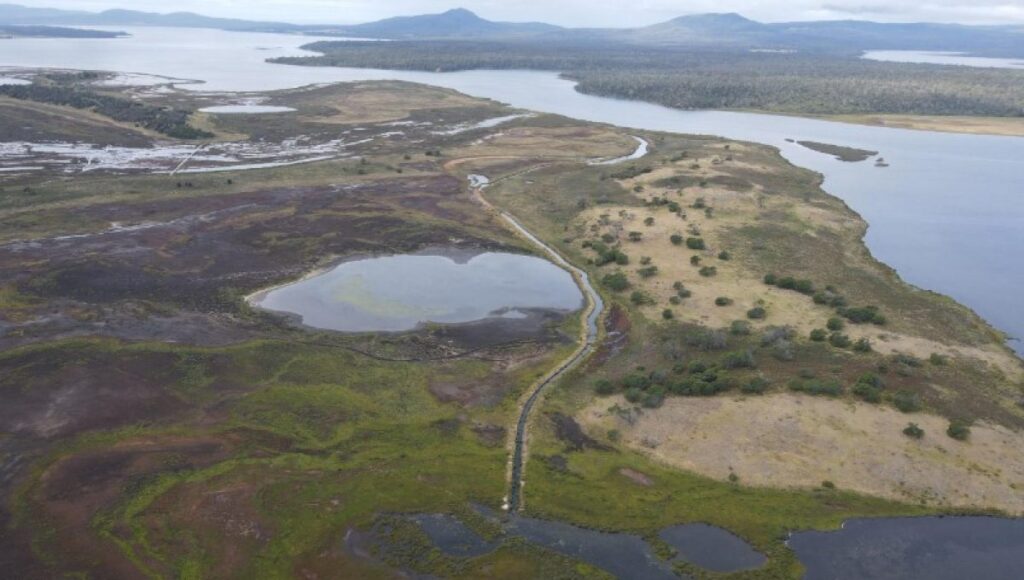
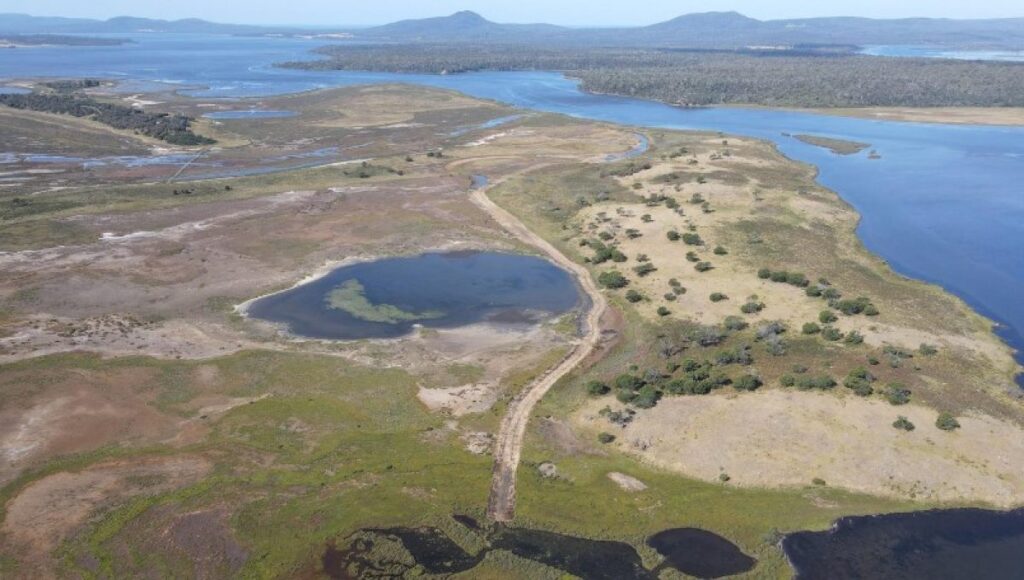
The NGT team has also been working to remove a levee, built by convicts in the early 1800s. Designed to keep water out, these levees were supposed to dry out land and convert it to grazing pasture, which significantly changed the vegetation either side of the bank. Removing the levee has taken 10 days work with an excavator; as NGT pointed out, ‘just imagine being a convict gang doing that job in reverse, digging by hand!’
Along with other drainage remediation works, this restoration has been settling in nicely, partly thanks to all the flooding that has happened recently. NGT provided the photo below, showing the regeneration that’s already happening on ground remediated last year.
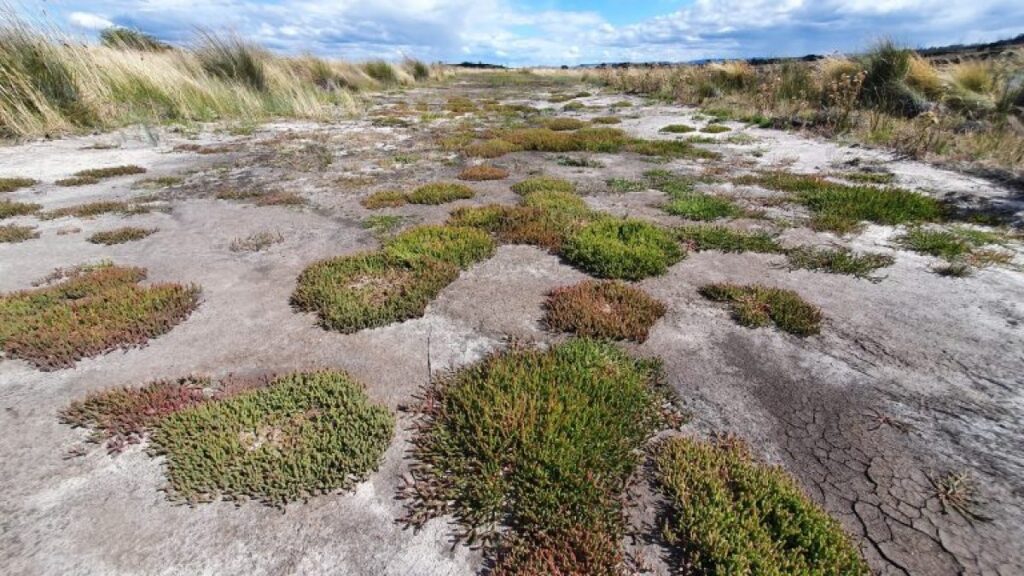
Overall, the team has been very satisfied with the work so far:
‘In a quirk of fate and timing, it turned out that we managed to complete the works just in time. As we were finishing off and leaving the site, the recent thunderstorms which initiated flows down the Swan and especially the Apsley River, were pushing up water levels in Moulting Lagoon – inundating ground upon which we had excavators working only days earlier. Beyond being a relief, this was actually also an incredibly interesting thing to witness so soon after the works, as we could see the rising water level beginning to seamlessly push flows through the saltmarsh in places where the levee bank had still been in place just a few days earlier. It is pretty amazing to see a process like this happening once more, for the first time in almost 200 years!’
If you would like more detail, and a lot more before-and-after photos, visit Nature Glenelg Trust’s website.
Get all the latest on how we are preparing our reserves for future challenges by subscribing to the TLC Newsletter.
Banner photo is by Grant Dixon.





